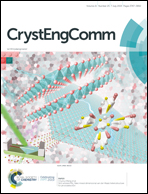SbSI whisker/PbI2 flake mixed-dimensional van der Waals heterostructure for photodetection†
Abstract
Here we report for the first time a van der Waals (vdW) heterostructure formed from an individual single crystal SbSI whisker and individual PbI2 flake for photodetection. Benefiting from the millimeter-sized whisker and flake, we take advantage of the flexibility of operation and vdW junction interface between SbSI and PbI2. This mixed-dimensional heterostructure is used as an optoelectronics platform due to the larger light-harvesting cross section than the individual material. It generates photocurrent to broaden the spectral response range. The two-dimensional (2D) material acts as a current collector, while the single crystal whisker material acts as a current channel. Compared with the individual SbSI device, the vdW heterojunction device can achieve a lower dark current. As a result, our SbSI–PbI2 photodetector exhibits a responsivity of up to 26.3 mA W−1 and shows a fast response speed of ∼12 ms. Large-area growth and scalable approaches lead to an efficient transfer strategy and heterostructure assembly. These investigations will broaden our fundamental knowledge of vdW heterostructures. This mixed-dimensional vdW heterostructure opens new opportunities for basic research of micro/nano-optoelectronics.



 Please wait while we load your content...
Please wait while we load your content...